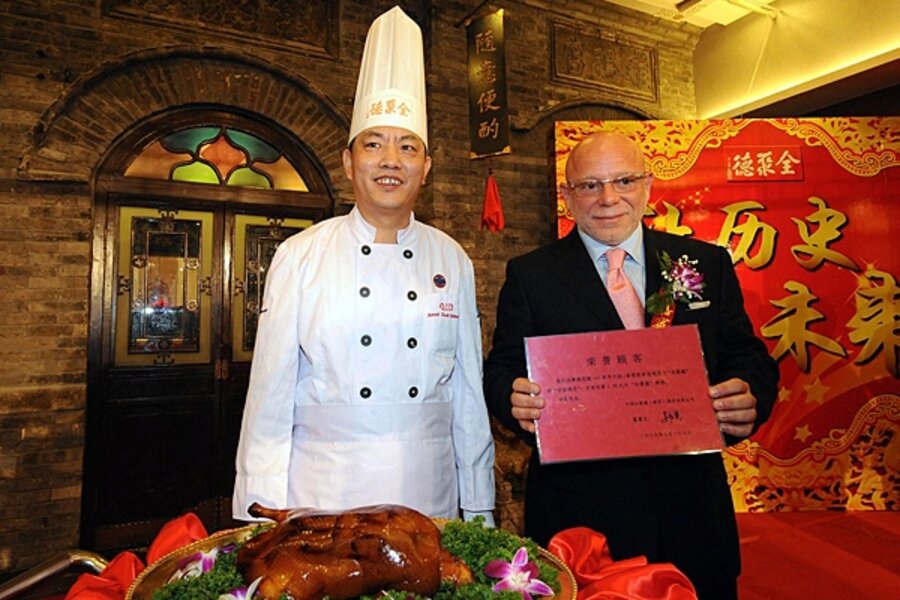Chinese urbanites drop chopsticks for 'Western' food
Loading...
BEIJING – Chinese travelers abroad are notorious for their reluctance to try foreign food. Quite aside from the fact that a steak in an American restaurant represents about a month’s meat intake for the average Chinese citizen, Chinese people have as much trouble with knives and forks as most Westerners do with chopsticks.
So it was something of a surprise when the Quanjude restaurant chain, Beijing’s best-known purveyor of that most Chinese of dishes – Peking duck – chose to celebrate the 50th anniversary of one of its branches today with an “International Food Festival.”
But maybe it shouldn't have been. Proud as they are of their own cuisine, Chinese consumers – especially young urban consumers – are developing a powerful hunger for foreign food.
And not just for McDonald's. There are more than 5,000 restaurants serving foreign food in Beijing today, according to Xu Meng, general secretary of the Beijing Western Food Association.
The name of his organization – set up five years ago as a sort of chamber of commerce for Western restaurants – is a little misleading. When he says “Western food,” he means “non-Chinese food”: 20 percent of his members are Japanese and Korean eateries.
But you can eat Turkish and Persian and Australian and Ethiopian and German and Russian and Indian and anything else you might want in today’s Beijing, not to mention the old Italian and French standards. A handful of them are world-class, with prices to match.
Foreign food is fashionable, and rising urban incomes mean city slickers can afford it. “We have a saying,” says Mr. Xu. “You eat Chinese food for its flavor, and Western food for its style.”
The latest fad? French-Japanese fusion food, cooked on a teppanyaki hotplate at your table. “It’s performance cuisine,” Mr. Xu enthuses.





